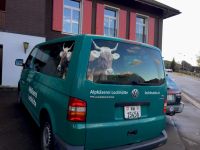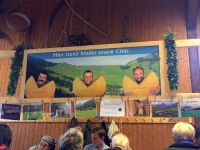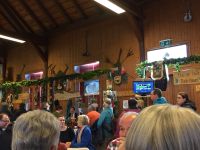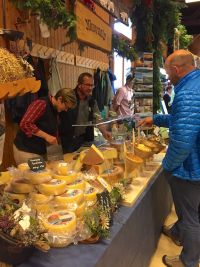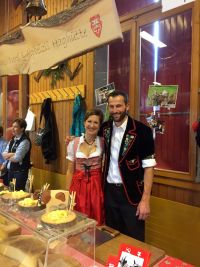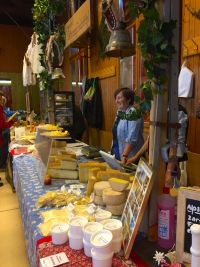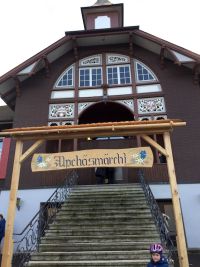
As soon as the spring arrives in the mountains, Alpine tradition of "Alpaufzug" starts. The "Älpler" or alpine farmers along with their animals leave their valley homes and head up to the alpine pastures on the mountains. For 3-4 months their home is the "Alphütte" or simple alpine huts. Thus begins a strenuous "Cheese season" with little comfort.
From early morning until late at night, the farmers are busy milking; making cheese & butter; feeding animals; caring for their claws; cleaning pastures; preparing wood; cooking and looking for lost animals. And this seven days a week. They cannot even think of having a rest-day. Nevertheless, every so often they make time for an "evening" of music and dance.
As the days get shorter in autumn, the grass and herbs grow slower, it is time to drive the cows down to the lower "Stafel" (mid valley) and later down into the valley. With a melancholic heart, the herds set off towards the valley. The festive alpine descent of the decorated animals "Alpabfahrt" is accompanied by thousands of spectators and many festivities.
Back in the valley, in accordance with an old custom, the cheese produced by the dairies is shared amongst the Älplers. The "Chästeile" marks the celebratory end of the Alpine Summer. This is also an opportunity for folks who could not buy cheese directly on the Alp to do so now.
And so, I happily headed out to the "Altes Schützenhaus" with Lukas where the Nidwalden Alpine Cheese Market is being held. I look forward to the cheese tasting sessions and to buy a good hunk of flavourful Cheese.
We start to walk around the stalls decorated as traditional Alpine Huts. Every stall is offering tasters. Soon I find that each Alpkäse has its unique aroma and flavour. The variety of local herbs, carefully handcrafted production methods and traditions characterize the cheese in aroma, color, form, maturity and hardening stage. They have only one thing in common: the uniquely spicy taste, which comes from the fresh alpine herbs. Alpkäse is mainly produced by hand and often old instruments and elaborate methods are used.
I'm a bit surprised to taste a piece of not-so-spicy cheese. The traditionally dressed Älpler couple tells me that its "Bergkäse". They enlighten me on the difference between Alpkäse and Bergkäse (Mountain cheeses). Alpkäse is produced only during the summer, with milk from cows, goats or sheep grazing on the Alps. A cheese may bear the designation "Alpkäse" only if the milk production and the curdling take place on the Alps.
Bergkäse, on the other hand, is produced in the village cheese factories of mountain regions, all year round (also in winter, when the animals are fed with hay in the barn). They continue to tell me that this traditional way of making alpine cheese is actually good for the Alps and Alpine farming is the source of biodiversity which is good not only for man but also for nature. The Alps are "geseyt". This means that they are "only mowed" with a clearly defined number of animals. As a result, alpine pastures are neither over- or under-utilized and are healthy and intact even after hundreds of years of cultivation. Thanks to this sustainable management, biodiversity in the Alps has largely been preserved. I ask them if it'd be ok to take their picture to share with family and friends in India and the US. "Gladly. We're happy to share our traditions" they say as they pose with big smiles.
After buying a couple of unique Alpkäse chunks, we sit down with friends to enjoy the evening eating cheese, drinking, laughing and chatting away... I look around the room at the Älplers in their Stalls, their work has not yet ended, they need to sell these cheeses to make money. I silently bow to their laborious Summer works, the fruits of which we sit and enjoy on this Table...
Danke Vielmal!!

